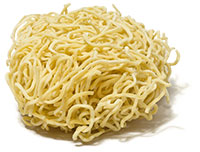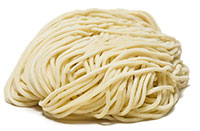Published September 1, 2008. From Cook’s Illustrated.
Why this recipe works:
Ingredients
- 3tablespoons soy sauce
- 2tablespoons oyster sauce
- 2tablespoons hoisin sauce (see note)
- 1tablespoon toasted sesame oil
- 1/4teaspoon five-spice powder
- 1pound boneless country-style pork ribs , trimmed of surface fat and excess gristle and sliced crosswise into 1/8-inch pieces (see note) (I used chicken thigh)
- 1/4teaspoon liquid smoke (optional)
- 1/2cup low-sodium chicken broth
- 1teaspoon cornstarch
- 2medium garlic cloves , minced or pressed through a garlic press (about 2 teaspoons)
- 2teaspoons grated fresh ginger
- 4 1/2teaspoons vegetable oil
- 4tablespoons Chinese rice cooking wine (Shao-Xing) or dry sherry (see note)
- 1/2pound shiitake mushrooms , stems trimmed, caps cut in halves or thirds (about 3 cups)
- 2bunches scallions , whites thinly sliced and greens cut into 1-inch pieces (about 2 cups)
- 1small head Napa or Chinese cabbage , halved, cored, and sliced crosswise into 1/2-inch strips (about 4 cups)
- 12ounces Chinese egg noodles (fresh) or 8 ounces dried linguine (see note)
- 1tablespoon Asian chile garlic sauce
Instructions
- Bring 4 quarts water to boil in Dutch oven over high heat.
- Whisk soy sauce, oyster sauce, hoisin sauce, sesame oil, and five-spice powder together in medium bowl. Place 3 tablespoons soy sauce mixture in large zipper-lock bag; add pork and liquid smoke, if using. Press out as much air as possible and seal bag, making sure that all pieces are coated with marinade. Refrigerate at least 15 minutes or up to 1 hour. Whisk broth and cornstarch into remaining soy sauce mixture in medium bowl. In separate small bowl, mix garlic and ginger with 1/2 teaspoon vegetable oil; set aside.
- Heat 1 teaspoon vegetable oil in 12-inch cast-iron or nonstick skillet over high heat until just smoking. Add half of pork in single layer, breaking up clumps with wooden spoon. Cook, without stirring, 1 minute. Continue to cook, stirring occasionally, until browned, 2 to 3 minutes. Add 2 tablespoons wine to skillet; cook, stirring constantly, until liquid is reduced and pork is well coated, 30 to 60 seconds. Transfer pork to medium bowl and repeat with remaining pork, 1 teaspoon oil, and remaining 2 tablespoons wine. Wipe skillet clean with paper towels.
- Return skillet to high heat, add 1 teaspoon vegetable oil, and heat until just smoking. Add mushrooms and cook, stirring occasionally, until light golden brown, 4 to 6 minutes. Add scallions and continue to cook, stirring occasionally, until scallions are wilted, 2 to 3 minutes longer; transfer vegetables to bowl with pork.
- Add remaining teaspoon vegetable oil and cabbage to now-empty skillet; cook, stirring occasionally, until spotty brown, 3 to 5 minutes. Clear center of skillet; add garlic-ginger mixture and cook, mashing mixture with spoon, until fragrant, about 30 seconds. Stir garlic mixture into cabbage; return pork-vegetable mixture and chicken broth-soy mixture to skillet; simmer until thickened and ingredients are well incorporated, 1 to 2 minutes. Remove skillet from heat.
- While cabbage is cooking, stir noodles into boiling water. Cook, stirring occasionally, until noodles are tender, 3 to 4 minutes for fresh Chinese noodles or
10 minutes for dried linguine. Drain noodles and transfer back to Dutch oven; add cooked stir-fry mixture and garlic-chili sauce, tossing noodles constantly, until sauce coats noodles. Serve immediately.
Shopping
Noodles for Lo Mein: Developing the recipe for our Pork Stir-Fry with Noodles, we discovered that not any old noodle will do.
 BEST BET
BEST BETThe slightly dry and curly fresh egg noodles labeled “lo mein” from an Asian market boasted firm texture and the best flavor.
 BEST ALTERNATIVE
BEST ALTERNATIVEDried linguine, though not authentic, offered a firm chewiness similar to lo mein.
 NO THANKS
NO THANKS
Vacuum-packed fresh noodles from the grocery store labeled “Chinese-style” were gummy and pasty.

